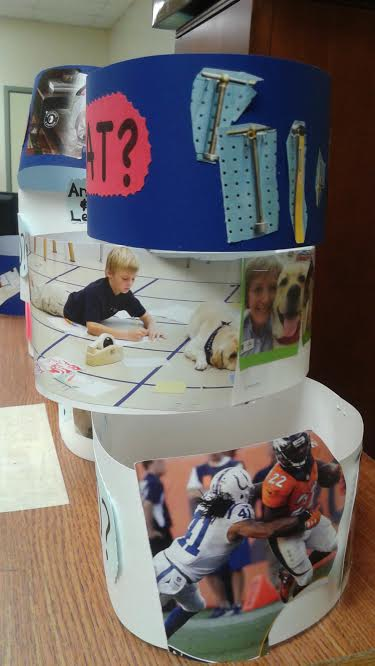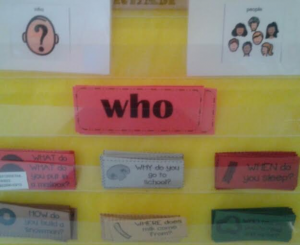
It takes a village, right? I’m not the only one to work with my students on any given day. During the day at their school village, children could cross paths with their teacher, assistant, special ed teacher, OT, ESL teacher, special area teacher, SLP, bus driver, hearing impaired teacher, cafeteria worker, and their peers – just to name a few. Many of my students receive direct teaching from 4 or more different adults each day. Overlapping of skills being taught is common. Transitions happen often. The more we can collaborate on goal priorities, method of strategies, and common language the better results we will see. It will be easier for the student because learning will be more streamlined, and it will be rewarding for us when we see results. Working in the school setting, I have learned numerous educational strategies from my talented colleagues. I am constantly looking for ways to incorporate math/literacy/science/social studies content into my therapy sessions. I am passionate about the communication skills I am teaching, so I get an extra spark when others are too! After all, language is a foundation to all learning!

I am very fortunate to work with a strong team of educators who look at the whole child, not just a set of goals. A few weeks ago, I was in a conversation with one of our resource teachers about the different levels of comprehension skills our students were at. We talked about the next steps for the reading skills and the language strategies I was teaching. At the core of some of their struggles was a lack of understanding of WH- question concepts. If I had a nickel for every time we practiced “If the questions asks who, the answer tells us a person”! (No, actually I prefer chocolate over nickels, but I digress.) Knowing that this skill overlaps both of our areas of teaching, we brainstormed how to get some repetitive practice. We decided that transitions could be our new friend.

The first part of our game plan was to decide to do a cycles style approach. One week for each question stem going in the order of who-what-when-where-why. (That’s the order I always say them so it was easier for me to remember). I wrote them on my calendar – in pen. I was tempted to stretch it out but I’m glad I committed myself to sticking with the weekly rotation so I can cycle back through them instead of feeling the urge to stay on one for mastery. I made her some materials from my stockpile of WH?s. For the first cycle, she is using the WH bingo boards on her door for an exit ticket. The kids are drawing a card to answer each time they leave. They are benefiting from repetition and peer models.


She is also making WH hats with her groups, which I LOVE! This has increased their engagement and helps with memory recall because now it is an experience.


I am using a different set of questions within the same WH theme during our “walk and talk” transition time. We also get a question for our ticket in and another for our ticket out. The thing I love about routines is that once we teach it, the kids will keep me on track if I skip over it forgetfully. As we continue to cycle through the WH questions we will be able to move from basic knowledge questions to more complex listening and reading comprehension questions.
The beauty of this collaborative conversation is that we identified a priority for our shared students. Then using existing materials, we framed our current time more efficiently by squeezing in the WH? focus to transitions. The students are hearing common language between the two of us so prompting is more effective. Ahhh, teamwork!



